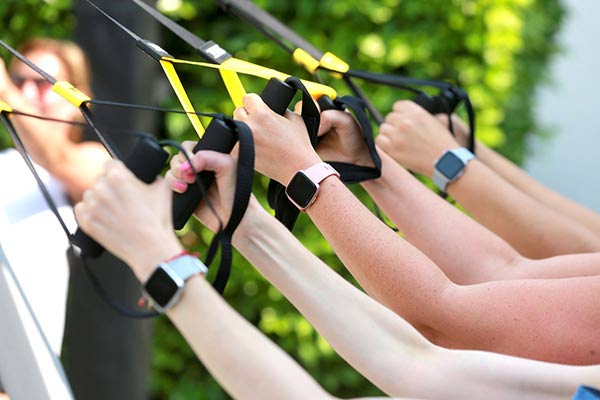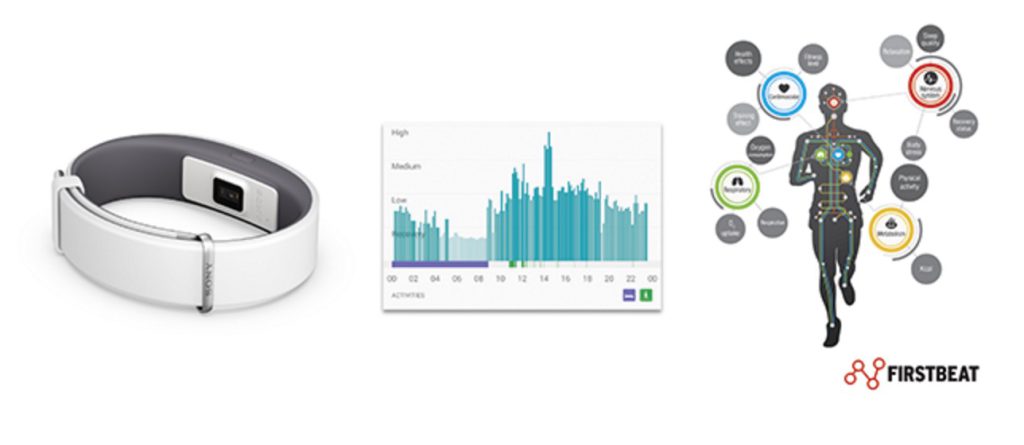In today’s ever-evolving world of technology, wearable gears and sports equipment have become an integral part of the sports industry. From fitness trackers to smart clothing and VR headsets, wearable technology has revolutionized the way athletes train, perform, and recover. With the ability to track athlete health, prevent injury, and improve performance, wearable technology has proven to be a game-changer in professional sports. In this review, we will explore the impact of wearable technology on the sports industry, its current applications, and its potential future developments. By examining the role of wearable gears and sports equipment, we aim to provide a comprehensive understanding of how these innovations are reshaping the landscape of sports and fitness.

What do you think wearable gears and sports equipment
Introduction to Wearable Technology
Definition and explanation of wearable technology
Wearable technology refers to a broad category of electronic devices that are designed to be worn on the body. These devices can include items such as jewelry, accessories, medical devices, and clothing. They range from simple skin patches with sensors to advanced AI hearing aids and VR headsets. Wearables use microprocessors, batteries, and internet connectivity to collect and sync data with other devices, making them versatile tools for health and fitness tracking, entertainment, fashion, military use, sports, and more.
History and evolution of wearable technology
The history of wearable technology dates back to the 13th century with the invention of eyeglasses and has since seen significant advancements. From the first calculator wristwatch in the 1970s to the introduction of Bluetooth headsets and Fitbits in the 2000s, wearable technology has rapidly developed. The 2010s marked a tipping point with the debut of Google Glass and the Apple Watch, and the 2020s continue to witness the expansion of wearable technology, with the gaming industry introducing newer AR and VR headsets and smart clothing.
Current applications of wearable technology
Wearable technology is being used in diverse fields such as consumer electronics, healthcare, entertainment, fashion, military, sports, and fitness. It is incorporated into scenarios like health and fitness tracking, chronic disease management, interactive gaming, performance monitoring, and navigation tracking. Examples of wearable technology include smart jewelry, fitness trackers, smart clothing, AR and VR headsets, AI hearing aids, and virtual assistants, showcasing the versatility of these devices in various industries and everyday life.
Wearable Technology in Sports
Wearable technology has revolutionized the sports industry by providing athletes with tools to track performance, monitor health, and prevent injuries. This data-driven approach has allowed for a more comprehensive analysis of athletes’ progress and has enabled coaches and team managers to make informed decisions based on real-time information.
Velocity-Based Training (VBT)
One prime example of the impact of wearable technology in sports is the implementation of smart wearables during weight training to track the athlete’s body and weights, ultimately improving overall performance. This method, known as velocity-based training (VBT), has seen increased popularity and efficiency with the availability of accelerometers and wearables.
- The data gathered from VBT sensors provides a more objective and accurate assessment of an athlete’s performance during strength training.
- This ultimately leads to a more informed and effective training regime.
Future of Wearable Technology in Sports
Looking ahead, the future of wearable technology in sports is expected to bring about even smaller and more integrated devices that will be seamlessly incorporated into sports uniforms, clothing, footwear, and protective gear. This advancement will not only maximize the amount and quality of data received but also involve more athletes in advanced programs related to the extended use of wearable electronics.
As wearable technology continues to evolve, it will play an increasingly important role in enabling athletes and coaches to better measure and monitor performance and health parameters on the field, ultimately leading to improved performance, injury prevention, and a competitive edge for athletes at all levels.
Impact of Wearable Technology on Sports Industry
Role of wearable technology in professional sports

Wearable technology has fundamentally transformed the landscape of professional sports by providing athletes and coaches with unprecedented access to real-time data and insights. From monitoring vital signs to performance metrics, wearable technology has become an integral part of training and performance optimization in professional sports.
Benefits of wearable technology for athletes and coaches
The benefits of wearable technology for athletes and coaches are numerous. It enables real-time monitoring of vital signs, physical activity, and performance metrics, allowing for informed decision-making in training and competition strategies. Additionally, wearable technology has facilitated the development of innovative applications for health monitoring and chronic illness management.
Revolutionizing the sports industry through real-time data and insights
The impact of wearable technology on the sports industry is profound, revolutionizing the way athletes track their training progress, monitor their health, and improve their performance. The integration of wearable technology into sports equipment has allowed for the collection and analysis of real-time data, leading to performance optimization and injury prevention.
Current Applications of Wearable Gears and Sports Equipment
Types of wearable gears and sports equipment
Wearable gears and sports equipment encompass a wide range of technologies designed to enhance athletic performance, monitor health metrics, and prevent injuries. These include smartwatches, fitness trackers, smart jewelry, VR headsets, and more. These devices are powered by microprocessors, batteries, and internet connectivity, and are extensively used in healthcare, navigation systems, consumer goods, professional sports, and advanced textiles.
Use of wearable gears for tracking athlete health and preventing injury
Wearable technology plays a crucial role in the sports industry by tracking athlete health and preventing injuries. Devices such as Fitbit, Apple Watch, Garmin, Samsung Galaxy Watch, and Polar are commonly used to monitor various aspects of an athlete’s health and performance, including heart rate, blood pressure, and physical activity. Coaches can access real-time data to analyze an athlete’s training progress and make informed decisions to prevent injuries and optimize performance.
Integration of wearables into sports gear for improved performance and safety
The integration of wearables into sports gear has revolutionized the way athletes train and compete. Wearable technology is used to enhance performance and safety through the integration of sensors and accelerometers into sports apparel and equipment. Additionally, wearable devices are used in sports medicine to prevent injuries by constantly accumulating and analyzing medical data. The future of wearable devices in sports is expected to bring smaller, more integrated devices that provide more accurate data and involve more athletes in advanced training programs.
Future Developments in Wearable Technology for Sports
The use of wearable technology in sports has seen significant advancements in recent years, with the future holding even more potential for innovation and integration. The following are expected developments in wearable technology for sports, the potential impact of smaller and more integrated wearables on athlete performance, and the enhanced data and insights for athletes and coaches through future wearable technology.
Expected advancements in wearable technology for sports

In the near future, wearable technology is expected to be more integrated into sports apparel and equipment, allowing for seamless monitoring of athlete performance and health. This integration includes the use of remote smart sensors, accelerometers, and optical sensors to track movements, speed, and vital signs. Wearable athletic devices and familiar technology such as smartwatches, fitness trackers, and smart shoes will continue to be extensively used in sports for tracking various areas of the player’s health and performance metrics. Moreover, the evolution of the wearable electronics market will lead to smaller, more integrated devices that maximize the amount and quality of data while involving more athletes in advanced programs related to the extended use of wearable electronics.
Potential impact of smaller and more integrated wearables on athlete performance
The integration of smaller and more integrated wearables into sports equipment and apparel has the potential to significantly impact athlete performance. Real-time data monitoring and analysis are crucial for improving athlete performance and providing valuable insights for coaches. With the use of GPS and Bluetooth-linked devices for real-time data relay to coaches, athletes can receive immediate feedback and make adjustments to their performance. Furthermore, wearable technology can aid in performance monitoring and navigation tracking in sports, providing athletes with the tools to optimize their training regimens and improve their overall performance.
Enhanced data and insights for athletes and coaches through future wearable technology
The future of wearable technology in sports holds the promise of enhanced data and insights for athletes and coaches. Wearable devices play a significant role in tracking athlete health, preventing injury, and improving athletic performance. The market for wearable electronics is expected to reach $27 billion by 2022, indicating the growing importance of wearable technology in the sports industry. These devices provide comprehensive sports analytics, tracking health indicators, and improving athletes’ performance, making them an indispensable tool for measuring and enhancing athletic performance.
conclusion
In conclusion, wearable technology has revolutionized the sports industry by providing athletes and coaches with real-time data and insights to optimize performance and prevent injuries. The future of wearable technology in sports holds great potential, with expectations of even smaller and more integrated devices that will seamlessly incorporate into sports apparel and equipment. The advancements in wearable gears and sports equipment have already enhanced athletic performance and health monitoring, and the future developments in this field are expected to bring about even more accurate data and involve more athletes in advanced training programs. As wearable technology continues to evolve, it is clear that it will play an increasingly significant role in the sports industry, paving the way for innovative and integrated solutions to further enhance athletic performance and overall sports experience.










